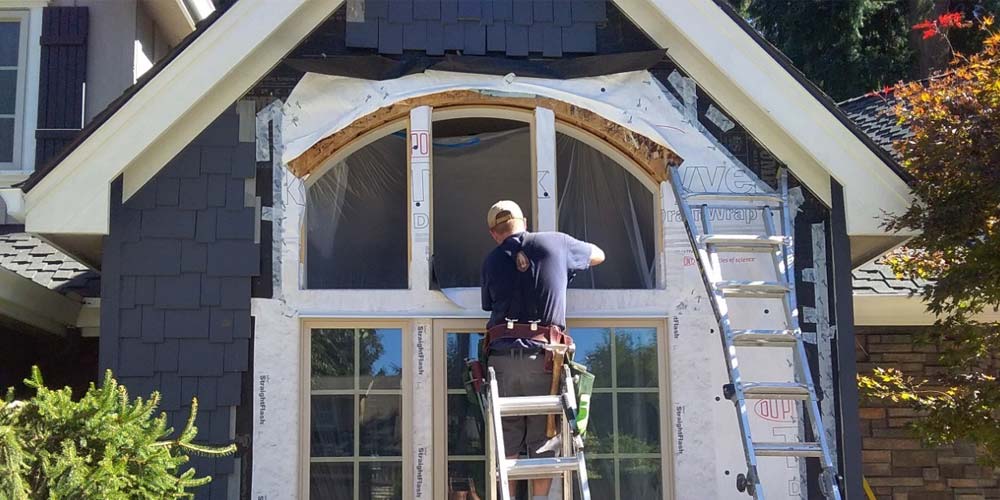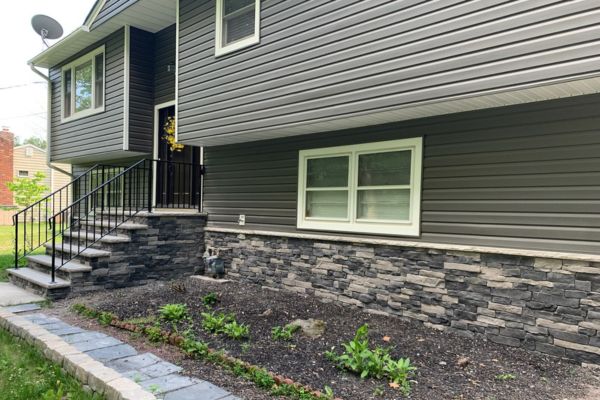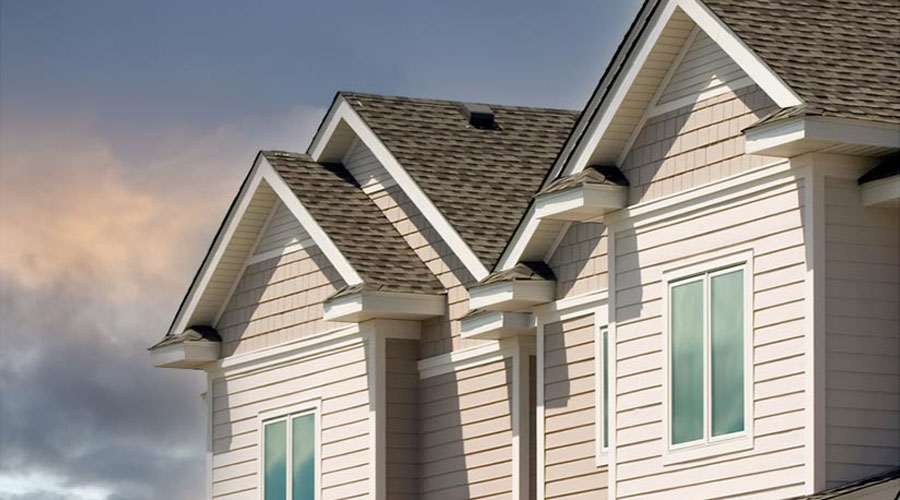Affordable and Professional Morris Siding Contractor for Every Project
Wiki Article
The Vital Guide to the Numerous Types of Home Siding and Their Unique Benefits
In the world of home improvement, selecting the right siding is an essential choice that affects both visual appeal and functional performance. With so many options to consider, which exterior siding product really stands out for your certain project?Timber Siding
Wood house siding, a preferred choice for household exteriors, provides an ageless visual that combines natural elegance with structural honesty. This house siding material is offered in various designs, including clapboard, shingles, and board-and-batten, allowing home owners to personalize their façade to match their style preferences. Wood siding is commonly crafted from durable varieties such as cedar, redwood, or yearn, which are known for their durability and ability to endure ecological stressors.Among the main benefits of wood house siding is its outstanding insulation residential or commercial properties, which can add to energy performance and reduced heating costs. Furthermore, wood exterior siding is eco-friendly, making it an eco-friendly choice when sourced sustainably. Regular upkeep, consisting of paint or discoloration, can extend its life expectancy and boost its appearance, allowing home owners to protect the natural appeal of the timber.
However, prospective downsides consist of vulnerability to bugs, rot, and climate damages, necessitating ample treatment and upkeep - morris siding contractor. In spite of these concerns, when properly cared for, timber house siding can provide a sturdy and lovely service that boosts the character of a home while providing a warm, welcoming environment

Plastic Siding
Plastic exterior siding has become a leading choice for home owners looking for a low-maintenance exterior alternative that integrates toughness and price. This versatile product is crafted from polyvinyl chloride (PVC), making it immune to different climate condition, consisting of moisture and UV rays. Therefore, plastic house siding does not warp, rot, or discolor, making certain lasting visual charm.Among the primary benefits of plastic house siding is its comprehensive range of styles and colors, enabling property owners to achieve the desired look for their residential or commercial property without the demand for constant repainting. In addition, vinyl exterior siding is very easy to set up, which can considerably reduce labor costs during building and construction or renovation projects.
Vinyl home siding additionally adds to energy effectiveness. Lots of alternatives attribute insulation backing, which improves thermal efficiency, aiding to keep comfy interior temperatures and potentially reducing energy expenses. Its smooth surface area facilitates simple cleaning, requiring only periodic cleaning with a yard tube to eliminate dust and debris.
Fiber Cement Exterior Siding
Fiber cement exterior siding has gotten grip among house owners and building contractors alike because of its exceptional mix of toughness and aesthetic convenience. Made up of a mix of sand, cement, and cellulose fibers, this home siding choice is engineered to endure extreme climate condition, including high winds, heavy rainfall, and temperature variations, making it a durable choice for property exteriors.
Among the main advantages of fiber cement exterior siding is its resistance to pests, such as termites, and its non-combustible nature, offering improved fire safety and security. morris siding contractor. Furthermore, it is available in a vast selection of designs, structures, and shades, allowing home owners to achieve their preferred visual without sacrificing performance
An additional advantage is its reduced upkeep needs; fiber cement home siding generally needs painting or discoloration every 5-10 years, which is much less frequent than other products. Its durability adds to a reduced total price of ownership, as it decreases the requirement for regular repair services or substitutes.
Inevitably, fiber concrete exterior siding stands click now for a superb financial investment for those looking for a resistant, eye-catching, and versatile exterior option, integrating both type and function to enhance the home's curb appeal.
Steel House Siding
The allure of metal siding lies in its robust resilience and contemporary aesthetic allure, making it a favored Read Full Report choice for modern style. Readily available in products such as aluminum and steel, metal home siding uses a series of shades and surfaces, enabling homeowners to attain a tailored look that complements their style vision.
Energy effectiveness is an additional significant advantage, as numerous steel siding items are designed with insulation options that help regulate indoor temperatures. This can lead to reduced energy prices over time. Additionally, metal siding is typically recyclable, making it an environmentally friendly selection for sustainability-minded property owners.
The setup process for metal home siding can be reasonably straightforward, resulting in a quicker turn-around time for building and construction tasks. On the whole, steel exterior siding incorporates capability and design, making it a useful option for those looking for a long-lasting and visually appealing outside surface.
Block and Rock Exterior Siding
Brick and rock exterior siding stands apart as a timeless selection that improves the visual appeal of any home. Recognized for their resilience and reduced upkeep, these materials provide an exceptional return on financial investment while raising the building's visual allure. Offered in various shades, appearances, and patterns, brick and rock can be tailored to match diverse building styles, from standard to modern.Among the key advantages of brick and rock house siding is their power efficiency. Both products possess all-natural protecting homes that assist manage indoor temperatures, possibly lowering heating and air conditioning prices. In addition, they offer exceptional fire resistance contrasted to various other siding alternatives, adding to improved security.
An additional advantage is their long life. Brick and stone can click resources last for decades, frequently needing marginal upkeep beyond occasional cleaning. Unlike wood home siding, they are unsusceptible parasites and rot, guaranteeing a long-lasting outside that withstands the components.
Conclusion
In recap, the choice of home siding significantly impacts a home's visual allure, power effectiveness, and upkeep demands. Each kind of home siding-- whether timber, vinyl, fiber concrete, block, or metal and stone-- offers unique advantages tailored to different homeowner preferences and environmental problems. Recognizing these alternatives allows informed decisions that boost both the sturdiness and visual charm of household outsides. Ultimately, selecting the right siding is important for achieving an equilibrium between capability and design in household design.One of the key benefits of wood exterior siding is its superb insulation homes, which can contribute to power efficiency and reduced heating expenses. In addition, wood exterior siding is eco-friendly, making it an environmentally pleasant choice when sourced sustainably.One of the main advantages of metal home siding is its resistance to numerous environmental aspects.Power efficiency is one more substantial advantage, as numerous metal house siding products are developed with insulation choices that help manage indoor temperature levels. Each type of exterior siding-- whether timber, plastic, fiber cement, brick, or metal and stone-- uses one-of-a-kind advantages customized to various property owner preferences and ecological conditions.
Report this wiki page